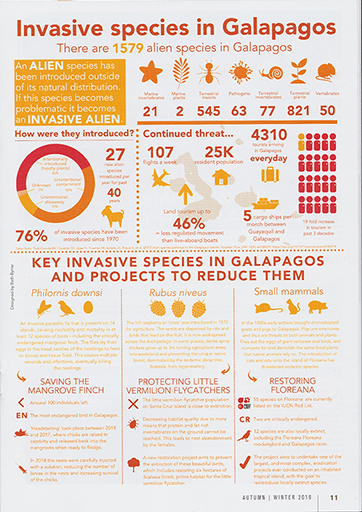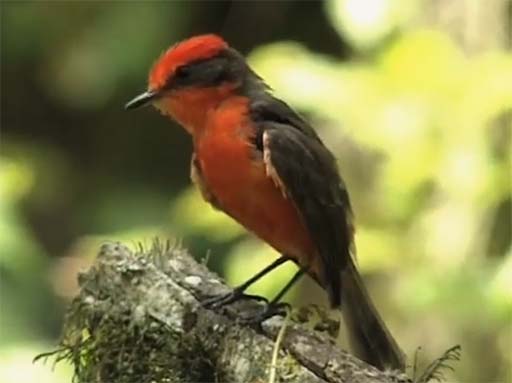3.4 How do invasive alien species reach the Galápagos islands
The impact of an invasive alien species can be dramatic. The islands will only retain their unique biodiversity if the routes by which aliens can enter the islands can be identified and managed. The Galápagos Conservation Trust produced a summary diagram in 2019 which shows the extent of the problem of alien species. The diagram is based on figures published in 2017.
The vermillion flycatcher provides an example of an endangered species that is rapidly declining. The species is endemic to the Galápagos. It lives in the native Scalesia forest, but that forest is disappearing as an introduced plant, the hill raspberry spreads and prevents the Scalesia forest from regenerating. An alien parasitic fly that lays it’s eggs in the nests of small birds may also contribute to the decline in the flycatcher population. The larvae that hatch then feed on the blood of the nestlings. Mortality is often 100%.
Areas of land are now being cleared of invasive plants to allow the native plants to recover and thus provide a habitat for the insect populations that the flycatcher feeds on.


